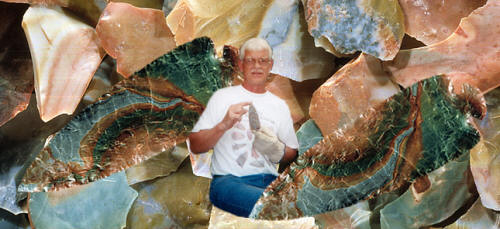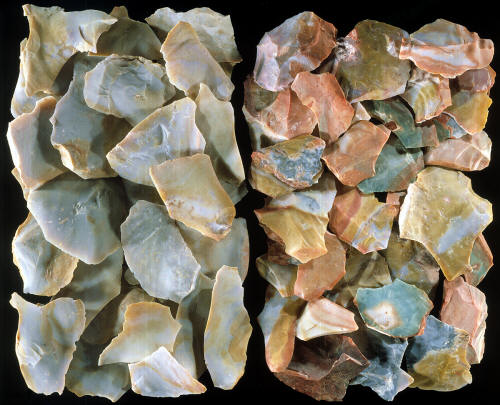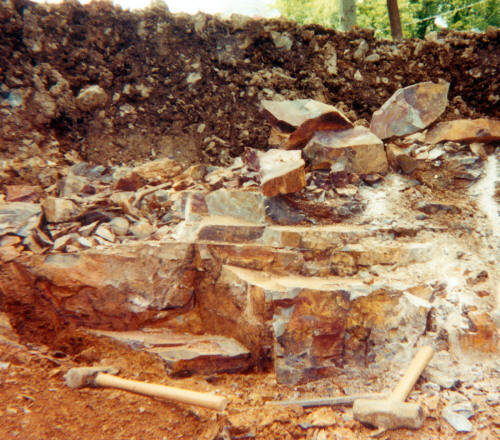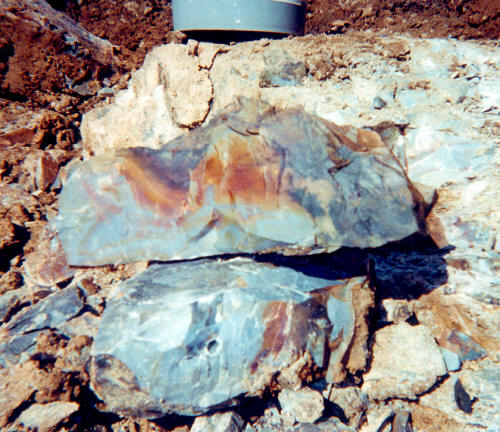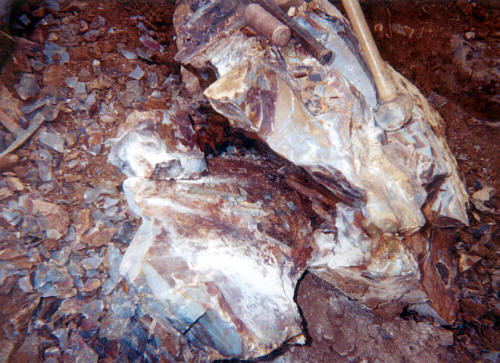|
|
|
Since this article is also about Roy's Flint Ridge quarry, here are some interesting facts about the area known as Flint Ridge. The Ohio Flint Ridge quarries have been well known to archaeologists for many years. W. H. Holmes wrote in 1912 "The extent of the ancient operations (at Flint Ridge) is almost beyond belief and can be realized only imperfectly by those who have not visited the locality." He also refers to the area as "one of the greatest of the known aboriginal quarries." In 1892 Warren K. Moorehead writes "Probably nowhere else in the United States are to be seen aboriginal excavations on so extensive a scale." |
|
|
Nomadic Paleo-Indians were the first people to use Flint Ridge flint sometime before 10,000 years ago. As an example, one of the Clovis points found in the Lamb cache is believed to be made of Flint Ridge flint. It was found in a cultivated field in western New York. Another good example of an ancient point is an Early Archaic Dovetail known as the "Hooks" Dove. It's is made a particularly rare variety of bright red Flint Ridge. Large scale quarrying activities did not begin until sometime during the Archaic period and later. Approximately 2,500 years ago, the Middle Woodland Hopewell people began making large numbers of small core blades they were using as knives. Holmes writes that "The presence (at Flint Ridge) of large numbers of cores or nuclei indicates that a product of much importance consisted of minute flake blades, which probably served as knives." |
|
|
The people of Ohio have brought attention to the geological formation, known as Flint Ridge in a couple of ways. In 1933 the Ohio Historical Society established the Flint Ridge State Memorial on a 525 acre portion of Flint Ridge. The site has a museum that is built over a restored prehistoric quarry pit and they have displays that explain the mining and chipping of flint. Also, in 1965, the Ohio General Assembly adopted flint as Ohio's official gemstone. |
|
|
|
|
Flint Ridge is described as a narrow irregular plateau-capped line of hills in Licking and Muskingum Counties, Ohio. Holmes writes that the ancient quarries in this area covers many hundreds of acres. He was certainly impressed with the extent of the ancient mining activities, to the point of finding it almost unbelievable. |
|
|
|
|
The Flint at Flint Ridge is capped by earth, clay and rock debris. The ancient pits were dug to a depth of five to twenty five feet to the flint stratum below. Many of the ancient pits look as if they were made in recent times. Some of them still have a depth of five to ten feet. Holmes writes that the actual flint stratum does not appear to exceed seven to eight feet in thickness. |
|
| CONTINUE ON TO PAGE THREE | |
|
"REFERENCES"
1892, Moorehead, Warren K., "Primitive Man In Ohio," p. 31. |
|
